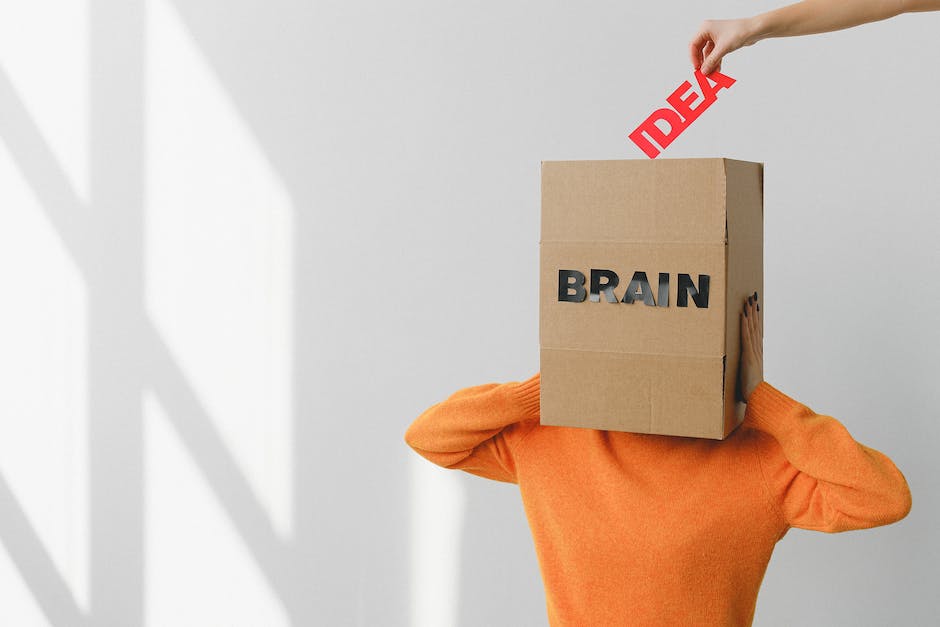Contents
Introduction to Cognitive Dissonance
Do you remember that time you desperately wanted two very different, seemingly incompatible things? Perhaps you wanted to eat a whole pint of your favorite ice cream but also wanted to stick to your health-conscious diet plan?
This psychological discomfort you experienced is what psychologists refer to as “cognitive dissonance.”
Cognitive Dissonance: Breaking it Down
Cognitive dissonance is a theory developed by social psychologist Leon Festinger in 1957. It’s fundamentally about the tension, or dissonance, that we experience when we hold two or more contradictory beliefs, values, or attitudes. Imagine this internal conflict as a sort of mental tug-of-war, demanding resolution for peace of mind.
The Impact on Decision Making
So, how does this psychological concept impact decision-making, especially in the world of marketing?
Here are a few key points to remember:
- Cognitive dissonance often influences purchasing decisions. After buying an expensive product or service, a consumer might feel discomfort due to the conflicting thoughts about the high cost and the benefits of the purchase.
- To alleviate this discomfort, they might seek out positive reviews about the product or downplay the significance of the cost.
Real-world Example: The Apple Phenomenon
Consider the immense popularity of Apple products. They’re significantly more expensive than alternatives but, over time, have created a loyal customer base.
Why? Apple consumers continuously validate their purchase decision by consistently emphasizing the superior quality, innovative designs, and superb user experience. This is an example of how consumers reduce cognitive dissonance.
Mitigating Cognitive Dissonance
As marketers, understanding cognitive dissonance can be a powerful tool. Here’s how marketers can help mitigate cognitive dissonance:
- Provide ample and clear information about products or services.
- Make comparison shopping easy.
- Follow-up with customers after a purchase to reassure their decision.
Remember that cognitive dissonance is simply a natural response to conflicting ideas or beliefs and is quite prevalent in our daily decision-making process.

Post-Purchase Behavior and its Significance
Post-purchase satisfaction is the perception of the received value in relation to what was expected. This satisfaction level ultimately influences brand loyalty, customer retention, and adds to the overarching consumer experience.
When customers’ expectations align with their actual experience, they’ll likely turn into repeat customers – a check-mark in the win column for any retailer.
- Example: Imagine purchasing a novel based on its enticing cover art and rave reviews, only to find the storyline dull and lacking. Now your satisfaction level, post-purchase, is low. Likely, you might think twice before buying from the same author, or even the same bookstore, again.
Post-Purchase Analysis and Its Impact
Why does post-purchase behavior play such a dynamic role in influencing future consumer habits? It boils down to lifetime customer value and negative word-of-mouth impact. Let’s break this down:
- Lifetime Customer Value: A satisfied customer is a recurring customer. Their purchases over time equate to a substantial income stream for retailers. Discontented customers not only fail to bring this revenue, they could even deter other potential buyers.
- Negative Word-of-Mouth Impact: Dissatisfied customers can do more harm than merely not repurchasing. In today’s digital era, they have the power to leave negative reviews and share unfavorable experiences across social media, potentially deterring new customer acquisition. This negative publicity can have long-lasting implications for the retailer in question.
- Example: Suppose a pair of headphones, purchased online, doesn’t deliver the promised high-quality sound. A negative review or post on social media about this product not meeting expectations can sway future potential customers into purchasing from a different brand.
The Retailer’s Role and Responsibility
As retailers delve further into their role in guiding and shaping post-purchase actions, they discover the hidden potentials in building robust customer experiences. Customer service and accessible return policies can tone down potential negative reviews and enhance brand loyalty.
For instance, quick-actioned refunds or exchanges, or even quality customer support, can transform a potentially negative post-purchase experience into a positive one.
It then makes astute business sense for retailers to address and manage consumers’ post-purchase conceptions, to mitigate negative impacts while bolstering customer satisfaction and repeat business.

Cognitive Dissonance in Post-Purchase Behavior
Having explored how cognitive dissonance influences purchasing decisions, let’s look into how it plays a role in post-purchase behavior.
Picture this, you’ve finally bought that new smartphone you’ve wanted for ages. You turn it on, bask in its shiny new features, but then, a twinge of doubt inches into your mind, exacerbating cognitive dissonance post-purchase.
Could you have gotten a better deal elsewhere? Were there other smartphones with superior features? This, folks, is cognitive dissonance creeping in.
The Three Types of Post-Purchase Dissonance
Generally, post-purchase cognitive dissonance may be classified into three categories:
- Functional dissonance: This occurs when a product or service doesn’t perform as expected. Let’s return to our smartphone example: you find the battery life underwhelming. This discrepancy between expectation and reality induces dissonance.
- Psychological/Emotional dissonance: This type of dissonance roots from social and personal expectations. Say, your peers are flaunting their latest iPhone and suddenly, your new but non-Apple phone seems less attractive.
- Financial dissonance: If the product’s cost appears too high compared to its value, financial dissonance sets in. Was the smartphone really worth the hefty price tag?
The Repercussions of Post-Purchase Cognitive Dissonance
Post-purchase cognitive dissonance can lead to a slew of negative outcomes.
A dissatisfied customer might spread negative word-of-mouth, tarnishing the brand’s image, and even leading to a decrease in sales. Moreover, this might affect the brand loyalty and customer retention rates critically.
Managing Cognitive Dissonance: A marketer’s Guide
So, what’s a marketer to do in the face of cognitive dissonance in consumers? Here are a few practical strategies that have proven effective:
- Establish expectations that match reality: Never over-promise and under-deliver. Always ensure that marketing and advertising campaigns provide consumers with accurate information to prevent functional and financial dissonance.
- Promote post-purchase engagement: Mailings, follow-up calls, and thank-you notes can reassure the customer of their purchase, reducing feelings of cognitive dissonance.
- Implement comprehensive return policies: Easy, comprehensible return policies can provide a sort of safety net for consumers, alleviating potential cognitive dissonance.
Understanding and managing cognitive dissonance post-purchase is not just a key to customer satisfaction but also to building long-term, profitable relationships with consumers. Marketers that pay heed to consumer psychology elevate their chances of success manifold.

Practical Examples of Cognitive Dissonance in Marketing
Starbucks: Using Cognitive Dissonance to Sell Higher-Priced Coffee
One of the most known examples is Starbucks, a brand that built its empire largely on the principles of cognitive dissonance. Here we’re talking about a company that sells a product (coffee) that consumers can find anywhere. Yet, they manage to charge, and have people willingly pay, significantly more.
Why you ask? Cognitive dissonance. Starbucks does not simply sell coffee. They sell a premium experience, the ambiance, the status of holding a Starbucks cup.
This cleverly layered experience helps consumers justify the premium prices – sure, it’s a bit more expensive, but you’re paying for the whole package. Now, that’s a smart use of cognitive dissonance in marketing.
“Hurry, sale ends soon!”, “Limited Stock Available”, “Exclusive Offer for You.” We’ve all seen these signposts in marketing and the driving theory behind these strategies is cognitive dissonance. Explain this in context, you say? Alright, let’s do it.
Imagine a scenario where you notice a limited-time offer on a product that you kind of like, but you’re unsure about buying.
Your brain is trying to resolve the dissonance between wanting to make a good financial decision (saving money) and the desire to take advantage of a good deal (spending money to potentially save more in the long term). This phenomenon powers the whole idea of impulse buying.
The Health Food Movement
Consider the health food movement where competing desires often cause cognitive dissonance. On one side, we love to eat delicious foods (because, well, they taste good), but on the other side, we want to be healthy and take care of our body.
Enter health food brands that create healthier versions of the foods we love. By opting for these, we are able to resolve the dissonance experiencing, liking the taste and health benefits.
Post-Purchase Rationalization
It’s quite common for us to experience cognitive dissonance after a purchase, especially if it’s an expensive or luxurious item. We may feel guilty or begin to question if we truly need it. What does our brain do? It starts to rationalize the reason behind our purchase, often highlighting the positive aspects and downplaying the negatives.
A classic example? Buying a new car – it’s not just about owning a fancy vehicle, it’s about reliability, safety, and comfort on the road.

Dealing With Cognitive Dissonance
A lot of marketers use confirmation theory effectively to resolve cognitive dissonance. By confirming the purchase decision, customers are led to feel content with their choice.
One example is the follow-up emails post-purchase. Marketers use them to remind customers about the product’s benefits, usage tips, or reviews from other satisfied customers. This way, they make sure the cognitive dissonance is kept at a minimum.
Consistent Messaging Across All Channels
For a robust approach towards cognitive dissonance, consistent messaging is key. From email campaigns and social media platforms to packaging and customer service, it’s pivotal to present the same image and message. This maintains the trust the customer has in both the product and the brand as a whole.
Remember the Old Spice “Smell Like a Man, Man” campaign? It was not just impactful because of its humor, but also because of its consistent messaging. Whether it was on YouTube, billboards, or television, Old Spice maintained its unique proposition to help reduce cognitive dissonance.
The Role of Social Proof
Sharing reviews from other customers can also be an effective strategy to reduce cognitive dissonance. This social proof of satisfaction from other buyers provides reassurance.
This tactic was effectively used by Amazon when they populated their product pages with user reviews.
Leveraging Cognitive Dissonance
A tactful way of looking at cognitive dissonance is to leverage it rather than just minimizing it. Marketers can use cognitive dissonance to encourage repeat purchases or upgrades.
For example, an automobile company may induce cognitive dissonance by showcasing premium add-ons (like leather seats or advanced entertainment systems) after a customer has purchased a standard model. The dissatisfaction arising from dissonance may in turn trigger an additional purchase.
Use of Trial Periods
Last.ly, including a risk-free trial period can significantly diminish post-purchase cognitive dissonance. It gives customers the freedom to return the product if they feel it doesn’t match their expectations.
Like 30 days free trials offered by streaming platforms like Netflix, it allows customers to experience the product without any financial stress.
Remember that cognitive dissonance is a natural part of the purchase journey. Marketers need to have strategies in place to tackle it and make the customers feel valued and satisfied with their decision. A

Photo by supergios on Unsplash
Sources and External Reading
- Cognitive Dissonance Marketing – WiserNotify – This resource explains cognitive dissonance marketing, detailing how consumers cope with psychological discomfort when faced with information or situations that challenge their existing beliefs or values.
- Cognitive Dissonance in Marketing: Definition and Examples – Indeed – Indeed provides a definition and examples of cognitive dissonance in marketing, highlighting how marketers can resolve internal conflicts to influence consumer choices.
- The Theory of Cognitive Dissonance: A Marketing and Management Perspective – ScienceDirect – ScienceDirect offers insights into the theory of cognitive dissonance in marketing, focusing on the relationships among various cognitions that influence individual behaviors and attitudes.
- Cognitive Dissonance in Marketing – Study.com – Study.com discusses cognitive dissonance in marketing, connecting it to consumer feelings, expectations, and perceptions in the context of brand interactions.
- Hey, Marketeers! Ever Heard Of Cognitive Dissonance? – Forbes – Forbes explores cognitive dissonance in marketing, emphasizing the importance of understanding and addressing it in communication strategies.
